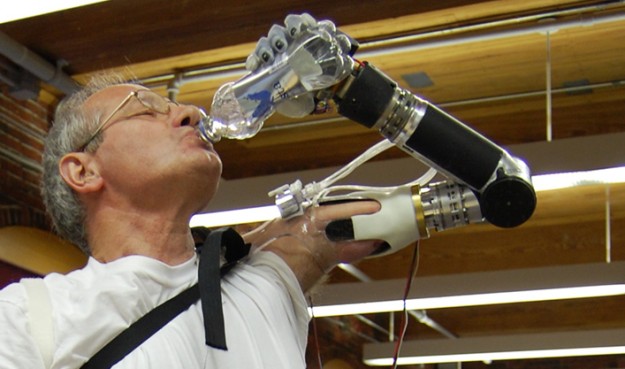BattleTech has a lot of amputee characters. Morgan Kell, Justin Allard, Kael Pershaw, Anastasius Focht/ Frederick Steiner, and Grayson Carlyle for instance; driving ‘Mechs is a dangerous business. But in the novels, most of the prosthetics were fairly advanced from a modern viewpoint. The characters could typically receive biofeedback and simulated nerve induction similar to the original limb. Some even had weapons built into them in a manner similar to cyberpunk settings like Neuromancer or Shadowrun.
By contrast, in real life, most prosthetic limbs seem more ornamental than functional. The can be cheaper and useful in the age of 3D printing, but they are still mainly wire and pulley affairs. The few electronic prosthetic limbs out there are usually specially-made affairs so expensive only the super-rich could afford — and are still clumsy and slow.
Hands are more than simple bone and meat clamps to hold things with. The motor cortex of the brain dedicates a full quarter of itself just to hand control- most of which is for fine motor control. The skin of the hands; particularly the fingertips and palms have some of the highest concentrations of nerve endings in the body. Simulating that in a prosthesis has been pretty much impossible. Until now.

Perhaps more refreshing than the water is the sense of accomplishment in regaining control and a sense of touch.
DARPA’s advanced research project at the John Hopkins Applied Physics Lab installed electrodes directly into the sensory and motor cortex of a 28 year old paralyzed man’s brain. This mimicked the sensation of touch, and when blindfolded, the man could tell with about one hundred percent accuracy which finger was being touched. The feelings described were ‘near normal’ according to the DARPA program director Justin Sanchez. He also added that precise fine motor control was very difficult without the sensory feedback provided through the nerve network in the fingers and hand. The hard wired integration is “showing great promise.”
You can see the prosthetic limbs themselves in action in this video. The servos in the elbow, wrist and individual fingers seem quick and very responsive. The patients deftly pluck a single grape from a bunch to eat, unscrew a water bottle cap, hold a spoon to eat a bowl of cereal, and other actions that require fine motor control that most of us take for granted day to day.
In Sanchez’ words, returning function of the nerves to a prosthesis “completed the circuit” for a technical restoration of near-natural function to a lost limb.
Some bold claims, but the videos do show great promise for the research. Now, if only they can make the prosthesis with built in laser guns or strong enough to lift a bus. (Most patients I believe would settle for one their HMO would actually cover; but that’s an entirely different can of worms)
It’s probably just a matter of time.
Well bargained, and done.